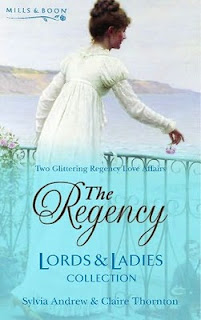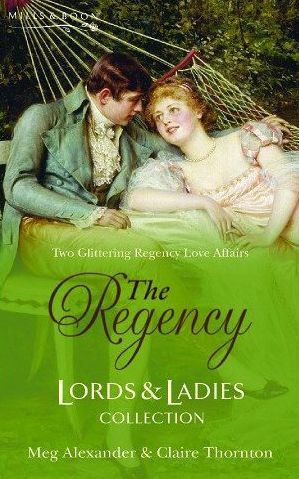Shulamith Firestone,
a widely quoted feminist writer who published her arresting first book, “The Dialectic of Sex,” at 25, only to withdraw from public life soon afterward, was found dead on Tuesday [...] [28 August 2012]. She was 67. [...] Subtitled “The Case for Feminist Revolution,” “The Dialectic of Sex” was published by William Morrow & Company in 1970. [...] The book, which was translated into several languages, hurtled Ms. Firestone into the front ranks of second-wave feminists, alongside women like Betty Friedan, Kate Millett and Germaine Greer. It remains widely taught in college women’s-studies courses. (Fox)
I can't remember when I first came across The Dialectic of Sex but it proved useful to me when I began to think about the Glittery HooHa, which I learned of thanks to a post by Jennifer Crusie in which she quoted Lani Diane Rich's explanation of how the term "Glittery HooHa" came into being, and what it means:
Once upon a time, in a land called Television Without Pity, the peasants gathered to discuss a particular type of character on soap operas. She was always blond, always beautiful, and always good-natured and kind, and always stupid beyond the telling of it. Did someone get approached by a masked man wearing dark gloves who needed help getting a puppy out of a wolf trap, only to happily agree to assist and disappear? It was her. Did someone get drunk on her honeymoon, pass out in a strange bed, and wake up only to assume on very little evidence that she’d slept with another man? Then lie about it? Then get caught lying? Then find out it was all a set-up by her evil twin, who had always been evil and had, in fact, done this before? It was her. Did someone get trapped in their own microwave oven?
Guess who?
And yet… there is a man. We’ll call him… Hero. Hero is handsome, he is strong, and… well, yes, okay, he’s kinda dumb, too, but still he manages to rescue her every single time she’s in trouble… which is approximately twice a show. He stays by her side and loves her through thick and thin. He disentangles her hair from the curling iron. He drops his Very Important Job to rush off and rescue her from the cardboard box on the pier where the Villain left her, warning her NOT TO SAY A WORD lest he do BAD BAD THINGS to her favorite hamster, so she kept quiet, even though the Villain was long gone, and many a passerby had passed her by. The Hero is loyal and loving and doesn’t seem to mind the fact that she is so FREAKIN’ stupid. How can this be??
Well, my friends, it comes down to the power of the Glittery HooHa, or the GHH for short. A woman with an HH as G as this girl merely needs to walk around as glitter falls from her netherparts, leaving a trail for Hero to follow. And once he finds her, it only takes one dip in the GHH to snare him forever, for yea, no matter how many HooHas he might see, never will there be one as Glittery as hers…
Of course, Shulamith Firestone wasn't a poster at Television Without Pity, but you could say that she'd already described the GHH long before, in The Dialectic of Sex:
because the distinguishing characteristic of women's exploitation as a class is sexual, a special means must be found to make them unaware that they are considered all alike sexually ("cunts"). Perhaps when a man marries he chooses from this undistinguishable lot with care, for as we have seen, he holds a special high place in his mental reserve for "The One," by virtue of her close association with himself; but in general he can't tell the difference between chicks (Blondes, Brunettes, Redheads). [...] When a man believes all women are alike, but wants to keep women from guessing, what does he do? He keeps his beliefs to himself, and pretends, to allay her suspicions, that what she has in common with other women is precisely what makes her different. Thus her sexuality eventually becomes synonymous with her individuality. [...]The process is so effective that most women have come to believe seriously that the world needs their particular sexual contributions to go on. ("She thinks her pussy is made of gold."). (148-50)
Firestone's articulation of the ideas underpinning the concept of the GHH is extremely harsh in its condemnation of both men and women and I don't think I'm deluding myself when I say that she certainly does not describe how the men in my life feel about women. When it comes to romance fiction and its depiction of heterosexual relationships, though, I have to admit that there are a fair number of misogynistic, promiscuous heroes who do seem to think that all women are untrustworthy and only good for one thing - until a surpassingly sexually attractive heroine appears to demonstrate that there is at least one exception (which perhaps proves the rule). It should be noted however that, contrary to Firestone's claim that a woman's "sexuality eventually becomes synonymous with her individuality," the success of such heroines is also dependent on their possession of a Prism (see Vivanco and Kramer).
In romance novels, as in real life, one can find plenty of women with complex personalities and unique relationships which are not based solely on sexual attraction and sexual pleasure. In romances the multi-faceted nature of these relationships is sometimes symbolised by rings given to the heroines of romances by their heroes: although these rings often indicate "that the hero and heroine have found their 'One' and may also symbolize the sexual attraction between them" (Vivanco 105), they also often "recall a moment of particular importance to their relationship, or reflect aspects of the personality [...] of the heroine, the hero, or both" (105).
That said, is it that case that, in some romances, there is such an overwhelming emphasis on sex, and the heroine's sexual allure, that it seems "her sexuality eventually becomes synonymous with her individuality"? Shulamith Firestone may be dead, but her work lives on and still raises thought-provoking questions.
---
Crusie, Jennifer. "Modern Literary Terms: The Glittery HooHa." 9 April 2007.
Firestone, Shulamith. The Dialectic of Sex: The Case for Feminist Revolution. 1970. New York: Bantam, 1971.
Fox, Margalit. "Shulamith Firestone, Feminist Writer, Dies at 67." The New York Times. 30 August 2012.
Vivanco, Laura, and Kyra Kramer. "There Are Six Bodies in This Relationship: An Anthropological Approach to the Romance Genre." Journal of Popular Romance Studies 1.1 (2010).
Vivanco, Laura. "One Ring to Bind Them: Ring Symbolism in Popular Romance Fiction." New Approaches to Popular Romance Fiction: Critical Essays. Ed. Sarah S. G. Frantz and Eric Murphy Selinger. Jefferson, North Carolina: McFarland, 2012. 99-107.



